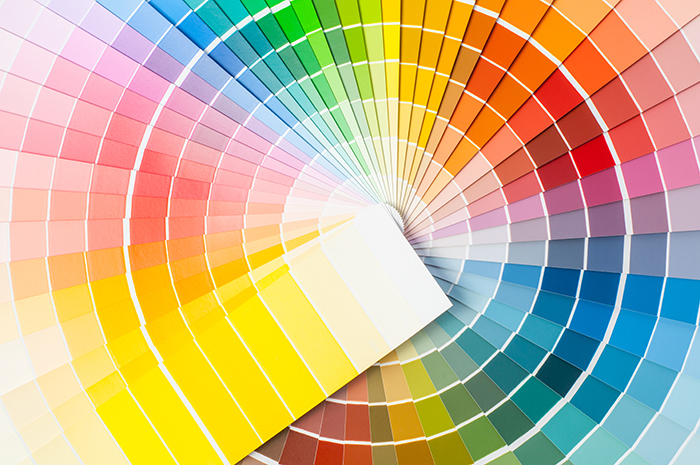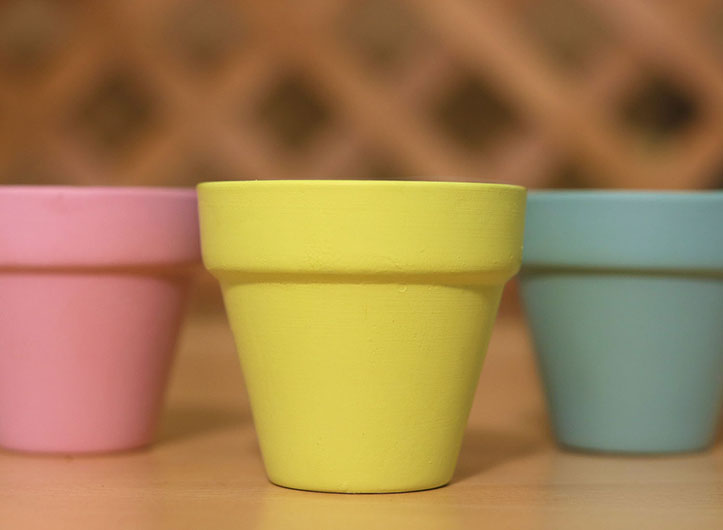More news
- “The coatings industry is facing many challenges, some of which can very well become...
- North America market report: Weak demand and expanding regulations affect coatings industr...
- The advent of digital colour standards in industrial and automotive coatings
- EU regulations round up April 2024 – EU finalises new protections for coatings worke...
- Moving fluids: Meeting the challenge of transferring dangerous liquids without common pitf...

Matt Adby, Director, Regional Consumer Products & Materials, X-Rite, discusses how to conquer colour consistency challenges
In architectural coatings, colour consistency isn’t just a matter of aesthetics; it’s a testament to quality and professionalism. The ability to precisely control colour ensures that a building’s exterior and interior maintain their intended look and feel, meeting the expectations of architects, designers and clients.
Building material manufacturers are responsible for ensuring the colour remains consistent, no matter what interior or exterior colour palette is selected. Accurate and consistent colour portrays an overall higher quality. Maintaining colour consistency across batches and projects is critical to reduce visual discrepancies and maintain harmony. Any colour differences can lead to expensive rework or discounting of products.
However, building materials like shingles, decking, siding, tile, grout, wood and glass have various textures, reflection and transmission characteristics that make colour consistency challenging to measure and control in production.
Variations in raw materials, manufacturing processes, application techniques and environmental factors can all influence colour appearance. Moreover, human perception of colour is subjective and can be affected by lighting conditions, surface texture and adjacent colours. These challenges underscore the need for precise colour measurement and control throughout the coating’s lifecycle, from specification and formulation to the finished product.
Establishing a colour workflow
The right combination of colour measurement, formulation, quality control and controlled lighting solutions can help ensure consistent colour across building materials.
Spectrophotometers are at the heart of any colour workflow. These colour measurement instruments measure and quantify colour by analysing its spectral reflectance properties. Spectrophotometers enable precise measurement of colour attributes, including hue, chroma and lightness, across a wide range of substrates and finishes. Spectrophotometers are used throughout manufacturing, from specifying colour to formulation to quality control. When choosing the right type of spectrophotometer, consider the type of colour you are measuring, the material you are measuring, the amount of data you need and your budget.
Benchtop sphere spectrophotometers, like the X-Rite Ci7800, enable reflection and transmission measurement across opaque, transparent and translucent materials. These devices are great for creating master colour standards and for formulation. Non-contact imaging spectrophotometers, including the MetaVue VS3200, can measure multi-coloured wet or dry coatings, powders and sealants enabling faster control of the process. Or, multi-angle instruments are ideal for measuring effect finishes to deliver complete characterisation of colour, sparkle and coarseness.
Colour measurement devices are equipped with advanced features, such as gloss compensation, which accounts for variations in surface texture and sheen. This ensures accurate colour assessment, even on irregular or reflective surfaces commonly found in architectural coatings.

Image caption: X-Rite Ci7800 used with Color iMatch software formulate coatings
READ MORE:
Focus on architectural: Indoor air quality and paint
Focus on architectural: Correct use of viscometers and side tests to characterise the rheology of latex paints
As design trends expand to include new colours and materials, colour formulation is critical. Today’s advanced formulation software uses spectral matching to automatically determine the best pigment or colourant combinations based on selected parameters. The software helps yield better matches in fewer steps and with fewer corrections. This gives material manufacturers additional control over formulation, productivity and profitability. Formulation software, such as X-Rite Color iMatch, even offers recipes that use the pigments on hand and give the option to include leftover materials to work off wasted material from past jobs.
For consistent colour batch-to-batch, implementing colour control solutions empowers manufacturers to enact robust quality assurance protocols and optimise production processes. Quality assurance software can identify whether a sample is within tolerance and, if not, provides direct feedback to get it on target. It includes process and material templates that contain pre-defined standards, tolerances and settings for instrument calibration and measurement modes to ensure correct colour measurement practices, regardless of location or software configuration. Furthermore, inline production solutions offer real-time, colour control on the product line, allowing users to track colour and even gloss consistency throughout the production process with minimal disruptions to quality check the colour. This proactive approach minimises waste, reduces rework and enhances overall operational efficiency.
In addition to maintaining colour consistency within a single batch or production run, colour workflow tools help manufacturers achieve colour harmony across multiple product lines or formulations. By establishing a unified colour palette and ensuring consistent colour reproduction across diverse substrates and finishes, building material manufacturers can streamline their product portfolio and strengthen their brand identity in the marketplace.
Having the right tools and workflows in place to control colour is essential in the manufacturing of all building materials— siding, windows, flooring, trim, glass and much more. Not only must all parts match throughout the home or building and retain colour integrity over time, but manufacturers must also be able to produce an exact colour match from batch to batch and even years down the road for replacement parts. This can only be done when colour workflow and best practices are leveraged.
More information about the equipment mentioned can be found here.







